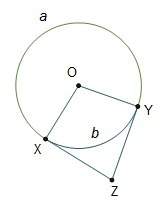
Mathematics, 29.11.2021 15:40, 23gordns
In 2013, the Public Religion Research Institute conducted a survey of 1,033 adults, 18 years of age or older, in the continental United States. One of the questions on their survey was as follows:
On any given Sunday, are you more likely to only be in church, more likely to only be watching football, doing both, or doing neither?
(a) To only be in church [269 respondents selected this answer]
(b) To only be watching football [175 respondents selected this answer]
(c) Doing both [217 respondents selected this answer]
(d) Doing neither [372 respondents selected this answer]
Create a 95% confidence interval to estimate the actual percentage of adults in the U. S., aged 18 and older, that are "likely" to ONLY be in church on any given Sunday.

Answers: 2
Other questions on the subject: Mathematics

Mathematics, 21.06.2019 16:00, sharondot2398
Sam makes his sales calls according to a pattern. he travels either north or south depending on the calendar. some of his past trips were as follows: on february 17, april 24, june 10, september 19, and november 3 he drove north. on february 28, may 25, august 22, november 20, and december 18, he drove south. describe sams' pattern. in which direction will sam drive on oct4 and oct 24?
Answers: 1

Mathematics, 21.06.2019 16:10, lilyplant4289
The number of hours per week that the television is turned on is determined for each family in a sample. the mean of the data is 37 hours and the median is 33.2 hours. twenty-four of the families in the sample turned on the television for 22 hours or less for the week. the 13th percentile of the data is 22 hours. approximately how many families are in the sample? round your answer to the nearest integer.
Answers: 1

Mathematics, 21.06.2019 19:00, dfrtgyuhijfghj4794
Since opening night, attendance at play a has increased steadily, while attendance at play b first rose and then fell. equations modeling the daily attendance y at each play are shown below, where x is the number of days since opening night. on what day(s) was the attendance the same at both plays? what was the attendance? play a: y = 8x + 191 play b: y = -x^2 + 26x + 126 a. the attendance was never the same at both plays. b. the attendance was the same on day 5. the attendance was 231 at both plays on that day. c. the attendance was the same on day 13. the attendance was 295 at both plays on that day. d. the attendance was the same on days 5 and 13. the attendance at both plays on those days was 231 and 295 respectively.
Answers: 1
Do you know the correct answer?
In 2013, the Public Religion Research Institute conducted a survey of 1,033 adults, 18 years of age...
Questions in other subjects:


Mathematics, 18.08.2019 20:30

Mathematics, 18.08.2019 20:30


History, 18.08.2019 20:30

Mathematics, 18.08.2019 20:30

Mathematics, 18.08.2019 20:30

Physics, 18.08.2019 20:30


Mathematics, 18.08.2019 20:30







